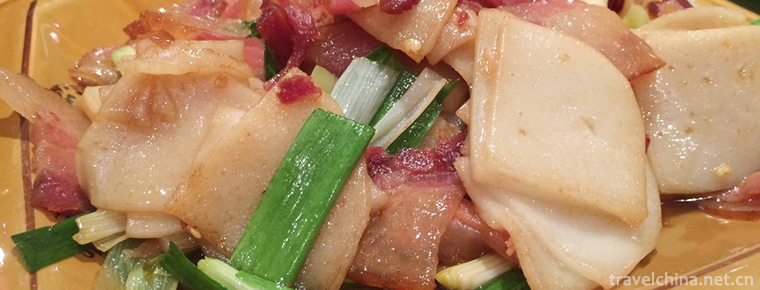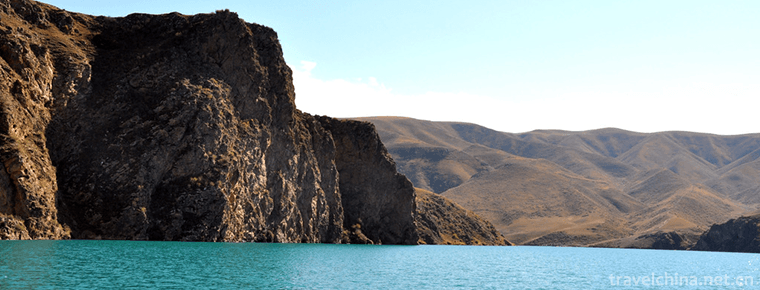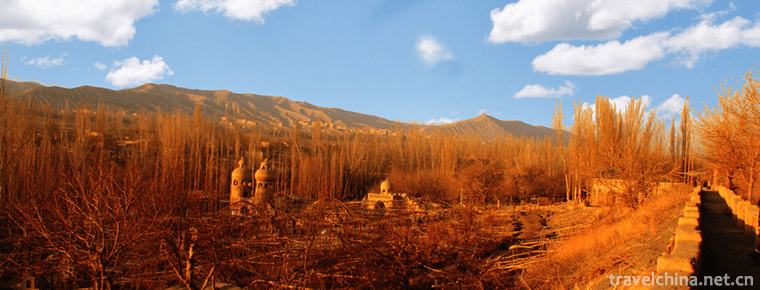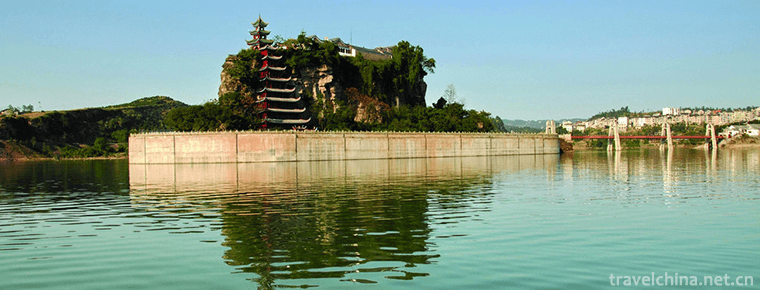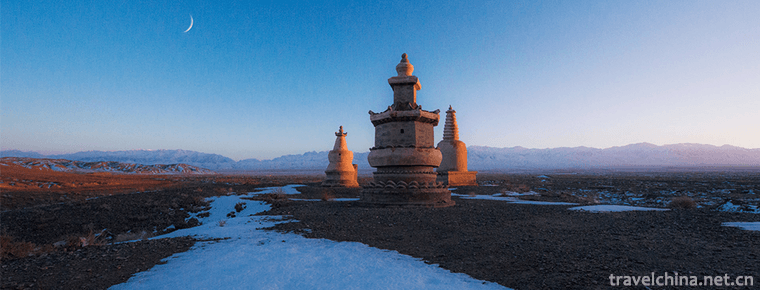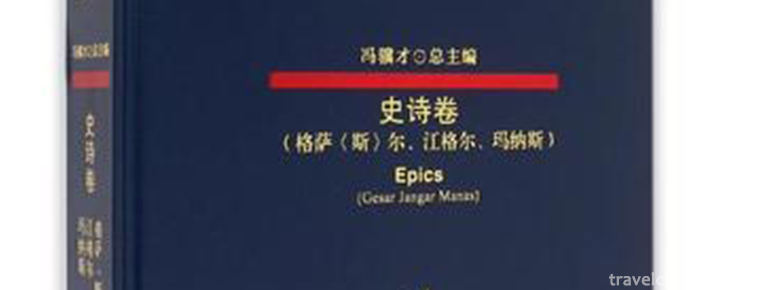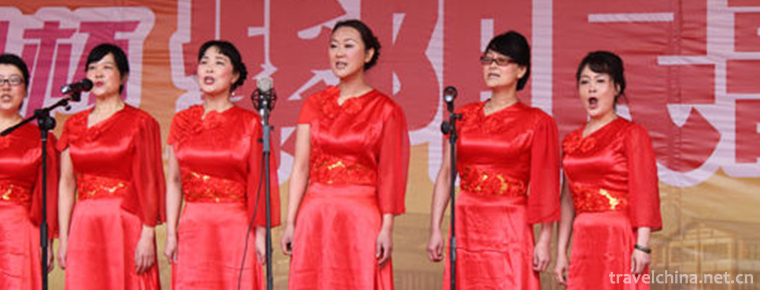The Custom of Hupu Women
The Custom of Hupu Women
Hupu women's custom is a traditional folk custom in Quanzhou City, Fujian Province. Hupu women are mainly distributed in the communities of Hupu, Jinzai, Houpu and Dongmei in Donghai Street, Fengze District. They are also known as the three major fishing women in Fujian Province, together with Huian women and Meizhou women. They are also called Aunt Hupu and Aunt Hupu. Hupu women's customs, including production, living customs and folk beliefs, are unique and highlight the artistic characteristics of marine culture.
Hupu women's clothing is simple and loose. Commonly known as "jacket, broad-legged pants", easy to work on the beach, reflecting the practical value of the coastal production labor needs. Hupu women's earrings are the symbol of their generation. Unmarried women wear tinkle Earrings without eardrops; married women wear tinkle earrings with eardrops called "lilac pendants"; after being a grandmother, they wear "mother lilac pendants".
Hupu women love flowers. From childhood, Quepu women grow their hair long. When they grow up, they put their hair on the back of their head and comb it into a bun. Then they put on a "bony bun" and tie it into a neat wreath with jasmine and jasmine flowers in season. There are a few one or two rings and more four or five rings, which are worn behind their heads. They are commonly called "hairpin circles" and contend for brilliance. Hupu Nu's bones retain the original meaning of "bone needle for hair" in ancient times and are unique "living fossils" in China.
The marriage custom of Hupu women retains the traditional customs of southern Fujian. From engagement to marriage, flowers are indispensable, and the marriage custom of "getting married in the middle of the night" is unique. The oyster shell of Hupu women's residence has the characteristics of wind resistance and waterproof, warm winter and cool summer, and strong walls. It is suitable for the windy and humid climate of the seaside.
Hupu women engage in inland aquaculture, catch fish and shrimp, sell seafood at market stalls all the year round. They believe in Mazu, the goddess of the sea. The ritual of "Mazu patrol incense" on the 9th day of March of the lunar calendar has become a grand folk activity.
On June 7, 2008, Hupu Female Customs was approved by the State Council of China to be included in the second batch of national intangible cultural heritage lists.
historical origin
Hupu women are also known as Aunt Hupu. They are also known as the three fishing women in Fujian Province, together with Hui'an women and Meizhou women. Hupu women mainly distribute in the communities of Hupu, Jinzai, Houpu and Dongmei in Donghai Street, Fengze District. The customs of Hupu women include production, living customs, residential customs and folk beliefs, which constitute the unique historical and cultural customs of Hupu women.
According to Xishan Magazine in Jiaqing Period of the Qing Dynasty, "The former Pu is the same as Hupu, and the thirty-seventh Dudu Dutou Pu is the same as Huweiyan. During the Jin and Tang Dynasties, the beaches were also gradually dried up to land in the Song Dynasty. Its place refers to the 36 capital of Lipu, which is located in Haipu, and villages began to exist in the Yuan and Ming Dynasties. It can be seen that the village of Kupu has a history of thousands of years. Hupu women's headwear is commonly known as "Hanhuawei". Jasmine flowers, smiling flowers and crude chaff flowers are commonly used in headwear. It is said that Yunlu Garden, a private villa of Pu Shougeng, an Arabic native of Quanzhou in the Southern Song Dynasty, was transplanted from the Western Regions and continues to this day, brimming with the flavor of exotic culture. Hupu oyster shell is the most distinctive folk house in southern Fujian. According to textual research, the oyster shell used in Hupu is not originated in Quanzhou, but was transported by an ocean-going merchant ship in Song and Yuan Dynasties when it returned to sea. It can be seen that "Hanhuawei" and "Oyster Shell Hu" are marked with the marine culture of Quanzhou in the Song and Yuan Dynasties.
The customs of women in Hupu are mainly composed of production customs, living customs, folk beliefs and residential customs.
Hupu women's clothes are simple and loose, commonly known as "jackets, pants". The jacket is a right jacket with a buttoned diagonal bosom. Its shoulder, arm, chest and waist dimensions are in harmony with the body, showing a soft curve, but also slim and plump women. Wide trousers are easy to work on the beach, easy to carry and walk, and suitable for fishermen's labor needs. Huapu women's headdress is commonly known as "Hanhuawei". It coils the hair behind the head, ties the red-headed rope, combs it into a bun, and then puts on a "bun of bones". In addition, it uses flower buds or buds to form a wreath, with less than one or two rings, more than four or five rings, and then uses the bun as the center of the circle, wearing the whole head in purple and crimson. Flowers, like a small flower bed full of spring. Hupu women's bony head ornaments are the relics of ancient "bone needle and hair" and are unique "living fossils" in China. Hupu women's earrings have their own characteristics and become the distinction of different ages. The most distinctive feature of Hupu women's marriage custom is the marriage custom of "getting married in the middle of the night". Its interesting news about marriage constitutes a great folk spectacle along the coast of southern Fujian. The customs of Hupu women's life, such as celebrating, celebrating New Year's Day and hanging red, are quite distinctive.
Oyster shells in Hupu women's residence have the characteristics of wind resistance and waterproof, warm winter and cool summer, and strong walls. They are very suitable for the windy and humid climate environment on the seashore. Besides practicability, they have more beautiful effects and form a natural landscape with characteristics of fishing villages in southern Fujian. Hupu people are born to deal with the sea and believe in Mazu, the goddess of the sea. Every year on the 9th Birthday of Mazu in March and the 23rd birthday of Mazu in September of the lunar calendar, men, women and children in the whole village of Hupu form a vast "perfume patrol" troop, carrying the statue of Mazu and performing pious sacrificial activities. The people of Hupu place their peace in the sanctuary of gods, so they have a strong folk belief in "praying for God and worshipping Buddha".
Hupu women's customs and customs are the inheritance and development of the original traditional customs in southern Fujian. At the same time, the special geographical location of Hupu has created its unique folk customs and customs, which contains the traces of the ancient maritime Silk Road in Quanzhou and has great historical research value. Hupu women's customs and customs have their own unique visual markers and profound cultural essence. Their dresses are unique. They have high artistic appreciation value and irreplaceable aesthetic significance. Oyster shells create unique skills to form a unique natural landscape of fishing villages in southern Fujian; Hupu women's marriage and childbearing customs and religious beliefs. It fully embodies the traditional virtues of Hupu women's pursuit of a better life and building a harmonious home, which has important cultural research value. After a long history, the customs of women in Hupu have developed in twists and turns with the change of the times. Because of the specific forms of labor and living environment, they are handed down from mother to daughter and from mother to daughter-in-law from generation to generation, which has far-reaching influence. With the acceleration of urbanization, Hupu has changed from a fishing village to a community, but the customs of women in Hupu still keep the tradition for hundreds of years, which is really valuable. "Hupu Female Custom" was listed in the second batch of national intangible cultural heritage list in 2008.
Customary characteristics
Headdress Culture
In a small fishing village on Donghai Street, Fengze District, Quanzhou City, Fujian Province, every woman's hair is in a bun at the back, with an ivory chopstick in the middle for hairpin, or another red chopstick in the middle. The most peripheral part of the bun is a beautiful hairpin. Some also need to insert a few bold silk flowers with bright color. In the simplest version, a circle of red-headed rope should be wrapped around the bun and silk flowers inserted.
It is said that at the end of the 1970s, the money spent by Hupu women was almost the same as that spent by the whole village on grain, and almost the same as the money spent on coal. The hairpin circle is a neat wreath of small flowers in season. Flowers are seasonal flowers. They can be elegant, delicate and floating laughter, magnolia, grapefruit flowers, or bright peach buds, small roses, carnations, etc. The chrysanthemums with long flowering period and various colors are cheap and beautiful, which are the most common choice. Wearing it on your head is like wearing a "small garden" and it's very beautiful.
The formation of the headdress culture of "Hupu Nu" has gone through the gestation period since the Eastern Jin Dynasty, the transition period of the Song and Yuan Dynasties, the maturity period of the Qing Dynasty and the early Republic of China, and the twists and turns of the rise and fall from the founding of New China to the present. However, due to specific forms of labor and living environment, it can be handed down from mother to daughter, mother-in-law and daughter-in-law from generation to generation. Biography.
Earrings Culture
Hupu women's earrings are also distinctive: unmarried girls wear round tinkle Earrings without ear drops; married girls wear tinkle earrings with eardrops; grandmothers wear "mother clove drops" earrings.
Costume Culture
Hupu women's clothing is simple and loose. The jacket is the right jacket with oblique bosom covered by buttons. The lower edge of the jacket is curved. The color of the jacket is mainly blue or light blue. The older women are mainly black. Its shoulder, arm, chest and waist scale strives to coordinate with the body, showing not only a soft curve, but also slim and plump women. Wide trousers are easy to work on the beach, easy to carry and walk, and suitable for fishermen's labor needs. The pants are mainly black and blue. The pants are about one foot wide. The pants are mostly white and blue. They are commonly known as "jackets and broad-legged pants".
Customs of life
The marriage custom of Hupu women retains the traditional customs of southern Fujian. From engagement to marriage, flowers are indispensable, and the marriage custom of "getting married in the middle of the night" is unique. Wedding clothes, Kupu women only wear once in a lifetime, after marriage, pack up and press the bottom of the box, until the end of life, before wearing funeral. Hupu women live in windproof and waterproof, warm winter and cool summer, strong walls, suitable for the windy and humid climate of the seaside.
Hupu women have the virtues of hardworking, thrifty housekeeping and husband-to-child education. They weave nets to pick fish, raise children, wash and cook, marry their daughters and daughters-in-law, and become the backbone of the family. When the tide recedes, no matter in winter or summer months, oysters and sea squid are raised and worked on the beach near the beach. Hupu women have been engaged in inland mariculture, fishing and shrimp catching for many years, and selling seafood at market stalls. Each of them is good at calculation and management, which makes other fishmongers feel inferior. Hupu women are business experts. There are many Hupu women in Quanzhou's agricultural and trade markets who tie up "Hanhua Wai".
Folk beliefs
Hupu girls are good at sea and water. They deal with water every day. They believe in Mazu, the goddess of the sea. The ritual of "Mazu patrol incense" on the 9th day of March of the lunar calendar has become a grand folk activity, which is relatively complete. At that time, men, women and children in the whole village of Kupu will form a vast "perfume patrol" troop, carrying the statue of Mazu and conducting devout sacrificial activities. The people of Hupu place their peace in the sanctuary of gods, so they have a strong folk belief in "praying for God and worshipping Buddha".
Inheritor
Huangchen, male, Han nationality, born in October 1962, is a native of Kupu, Fengze District, Quanzhou. She is the representative inheritor of the fourth batch of municipal intangible cultural heritage projects. In 1973, Mr. Wang Liangwu learned the skills of making women's clothes in Hupu. Since 1977, she has been making women's clothes in Hupu by "self-reliance gateway". It has a history of more than 30 years. She has excellent production skills, which not only retains the original traditional characteristics of women's clothes in Hupu, but also has a certain development. Its production of Hupu women's clothing highlights practicality, simple and relaxed, stable and generous, has won prizes in the Hupu women's clothing production contest. In recent years, in order to protect the customs of women in Hupu and to meet the need of creating the folk culture of "Hupu women", he has established a production center for women's clothing in Hupu. His works have been widely reported by the media at home and abroad, collected by experts, and participated in the 5th Anniversary Achievement Exhibition of the 2011 BMW Chinese Cultural Tour. Many stage performances have adopted the production of Hupu women's clothing. As a performance costume, Pu women's clothes were taken overseas by Hupu women to participate in exchange activities. At the same time, he has not forgotten the inheritance and development of women's clothing production skills in Hupu. Huang Hope and Huang Fangfang are apprentices and actively teach women's clothing production skills in Hupu.

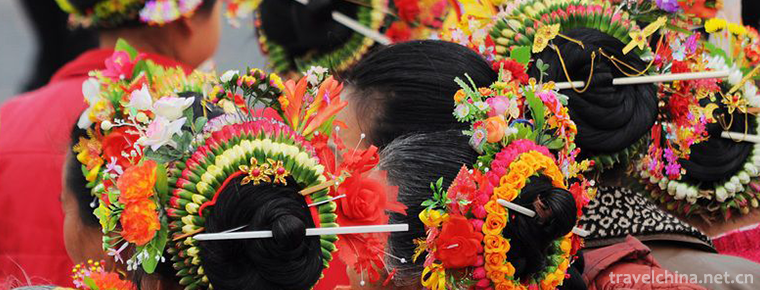
-
Fried the bait
Fried the bait/Great rescue is a famous traditional snack in Tengchong County, Yunnan Province..
Views: 237 Time 2018-11-27 -
Karajun Scenic Area
Karajun is Kazakh, meaning "the wilderness on the ridge". Karajun Mountain is a stretch of mountains from east to west. On both sides of it are hills with ravines and combs.
Views: 156 Time 2018-12-12 -
Putaogou Scenic Area Turpan City
The Putaogou Scenic Area in Turpan City is located in the Flame Mountain, 11 kilometers northeast of Turpan City, Xinjiang. It is about 8 kilometers long in the South and 2 kilometers wide in the East.
Views: 171 Time 2018-12-12 -
Shi Bao Village
Shibaozhai, a national AAAA-level tourist attraction, a national key cultural relic protection unit, is one of the 30 best new tourist landscapes in the Three Gorges of the Yangtze River,.
Views: 96 Time 2019-02-08 -
Sunan Wenshu Temple Scenic Spot
The Sunan Wenshu Temple scenic spot is located at the foot of the Suzhu Chain, the main peak of Qilian Mountain in Sunan County, Gansu Province. It is a national key cultural relic protection unit and.
Views: 169 Time 2019-02-13 -
Butterfly Bucket Encouragement of the Browns
Buzz drum dance is a kind of collective dance of men and women of ancestral origin. It has great improvisation. There are two kinds of dance methods: He Xinfang and.
Views: 309 Time 2019-04-04 -
Gesar
Gesar (Sr) came into being in the second half of the 17th century and spread among the Mongolian people in Mongolia, Liaoning, Jilin, Heilongjiang, Qinghai, Gansu, Xinjiang and other provinces and reg.
Views: 321 Time 2019-05-01 -
Mianzhu Wood Engraving New Year Picture
Mianzhu New Year Picture, also known as Mianzhu Wood Printing New Year Picture, is one of the Chinese Folk Woodcut New Year Pictures. It is named for Mianzhu City, Sichuan Province.
Views: 65 Time 2019-06-04 -
Ziyang Folk Songs
Ziyang Folk Song is the general name of traditional folk songs spread in Ziyang County, Shaanxi Province, and it is the most representative of traditional folk songs in southern Shaanxi Province. It h.
Views: 347 Time 2019-08-16 -
Public education in Chengdu Giant Panda Base
From 2003 to 2016, Chengdu base received more than 100000 primary and secondary school students at home and abroad, and trained more than 800 volunteers; went to colleges and universities, communities, primary and secondary schools, kindergartens and nature .
Views: 352 Time 2020-12-13 -
Warm tips for Chengdu Giant Panda Base
Giant pandas live in dense bamboo forests at an altitude of 2600-3500 meters. The annual temperature is lower than 20 ℃ and likes cold and afraid of heat. When the weather is cool, the giant panda will carry out activities in the outdoor playground. When the outdoor.
Views: 172 Time 2020-12-13

